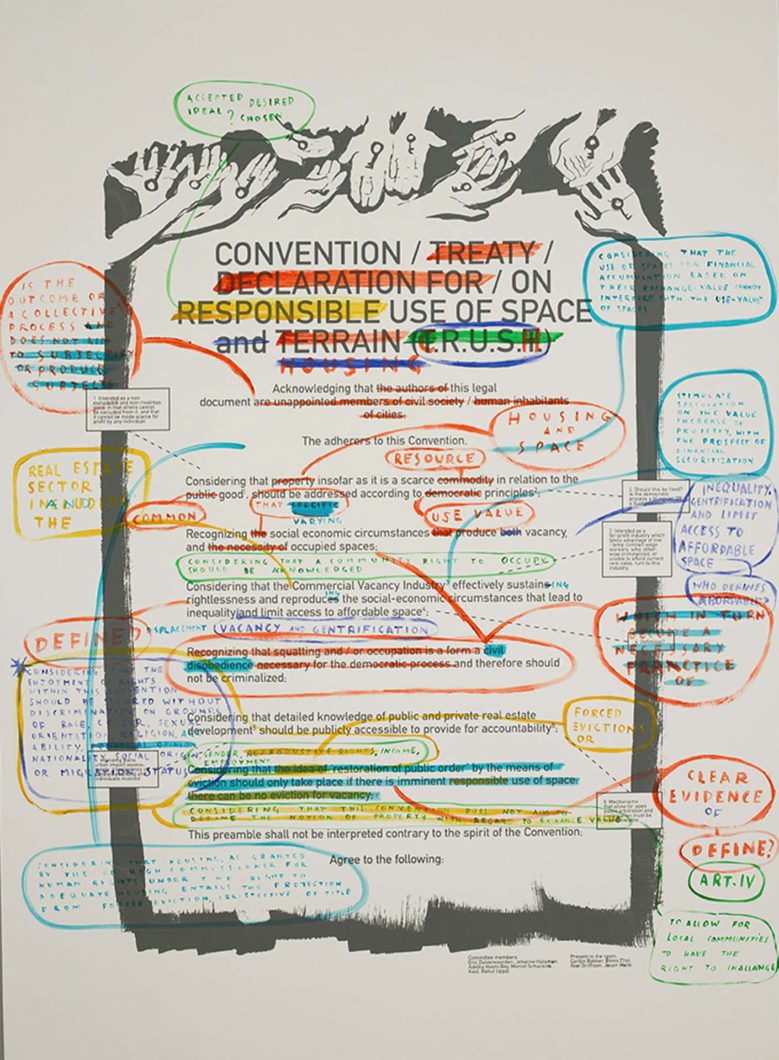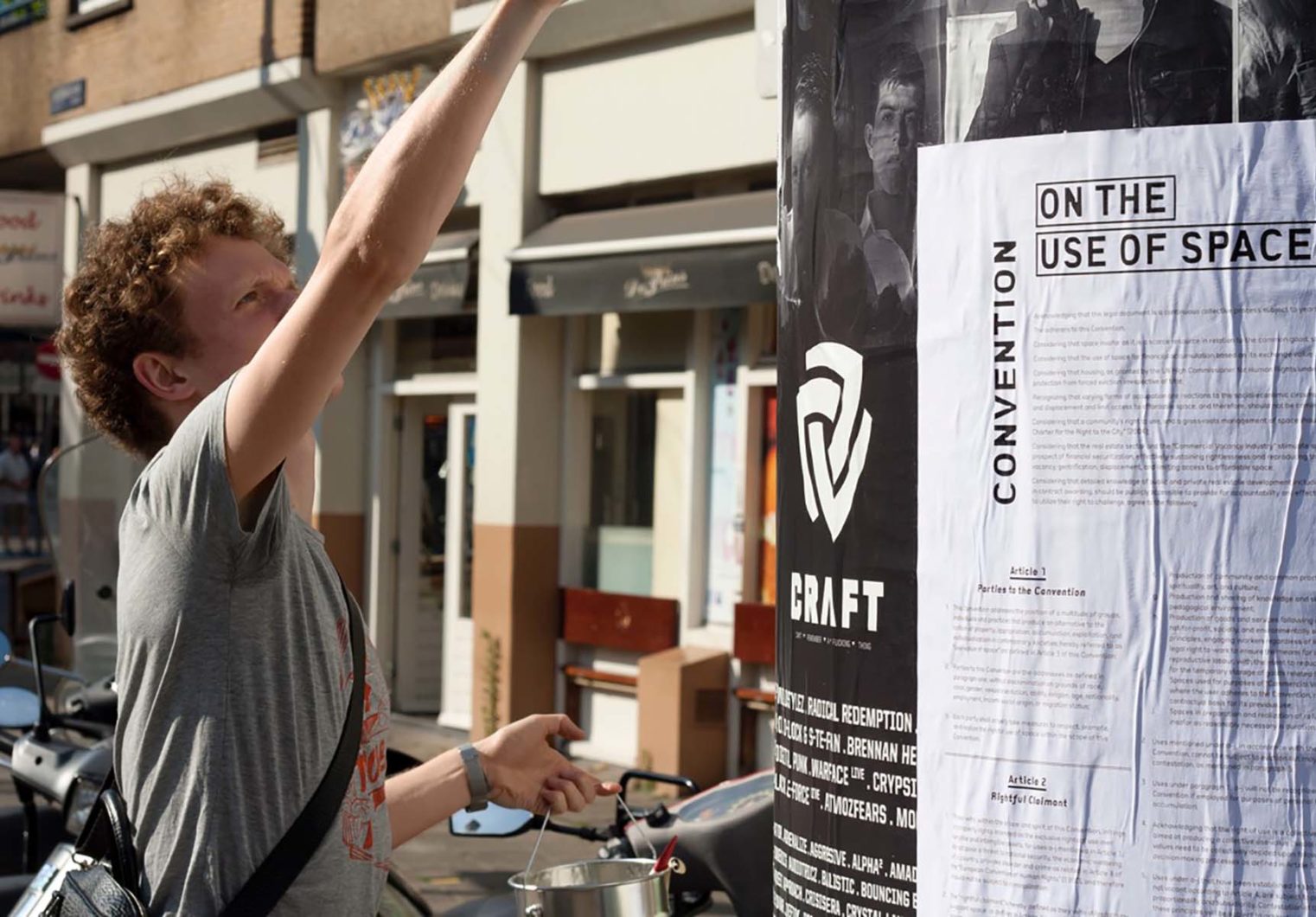Convention on the use of space
The creation of a new legal instrument to legitimate and protect the occupation of ‘empty’ space for non-marketable uses




Initiator(s)
Adelita Husni-Bey
Description
The project consists of a legal instrument drafted as a response to the housing crisis: the lack of affordable homes, absence of provisions for those without the legal right to stay, rising rents, and the criminalisation of squatting. Husni-Bey, in collaboration with different participants (lawyers, activists, academics, squatters, researchers and cultural workers), wrote the text through a series of public drafting assemblies. During the collective sessions, the document was created, amended, critiqued and transformed. To be able to assist in making legal claims in court, the convention was written with the assistance of lawyers, yet it uses a legitimate form to make claims that are currently not considered legal. The document, therefore, provides an explanation of the motive behind an illegal action - squatting, for instance - and attempts to unite and protect struggles against the privatisation of space and housing.
Context
The Convention declares that occupation should be re-legalized, or made legal, or protected, depending on the state where the Convention is taken to, and that urban space should not be speculated upon, should be protected, essentially that everybody should have a right to space. The different claims that it makes in the orientations and different directions that this gets taken to are the result of different legislations that the Convention approaches because every single country in Europe has its own legal codes around housing. Therefore the Convention needs to be a travelling document that goes to each different European state in order to rewrite itself according to local legislation.
How to use it
The Convention can be used as a supporting document in court and affixed in spaces threatened with eviction. It can be used to make a claim to a space, with the intention that the more people who sign and use it, the more a grassroots use of space will be achieved as a result. The legitimacy of the document is derived from those organisations, associations, collectives, houses, trade unions, groups, individuals, and municipalities that feel an affinity to the document, sign it and endorse its contents. These signatories abide by the Convention and can be guarantors for articles and their values. In turn, this growing community puts political pressure on existing institutions to recognise its legality.
Goals
Legitimate and protect certain uses of ‘empty’ space to be occupied to produce non-marketable uses: living, sharing knowledge and skills, occupying space in protest, running cooperative systems of wealth and labour distribution, providing mental and physical support, or protecting space from environmental destruction. Going forward the Convention will be hosted in different EU countries, translated and open to further amendments, in order to produce a ‘European Convention on the Use of Space’.
Beneficial outcomes
Facing the absence of European laws protecting the urban commons, the convention supplies the lack and acts as a contract. Subjects that sign it agree with its principles and guidelines. The convention can be used as a supportive document in court and affixed in spaces threatened with eviction.
Location
The Netherlands, Spain
Field
Loopholes, Hacking, Extraterritorial Reciprocity, Userhsip
Strategy
Legislative Change, Use of the space as a common good, Space Hijack, Housing Rights, Right to the city
Users
Open to all users
Maintained by
Initial supporter was Casco Office for Art Design and Theory, Utrecht. It is maintained by the initiator in collaboration with hosting institutions that organise readings of the convention such as Centro de Arte Dos de Mayo (Madrid) and Tenderpixel (London)
Duration
2015 - ongoing
Coefficient of Arte Util
80%
Category
Scientific
Pedagogical
Politics
Urban Development
Economy
Environment
Social






